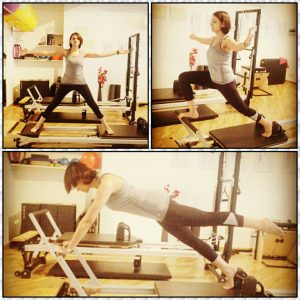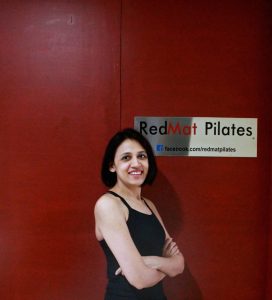It’s not much that I began to run but that I continued – Hal Higdon
Human beings were made to run, that is what helped us survive as a species, and is one of the most natural movements apart from walking that is available to us. However most exercise related injuries can be attributed to the overuse of the same muscles over a period of time due to bad movement patterns and in running coupled with the repetitive nature of the sport itself.
This is where Pilates steps in.….
Pilates of late has become widely popular in India thanks to the Bollywood actors practicing and talking about it on various social media platforms. One of the most common perception of when one says Pilates is that it’s great for abs! That’s true, but Pilates is much more than that. It strongly focuses on three aspects:
- Mobility of joints
- Core Stability
- Better Posture
If you have ever suffered from low back pain, stiffness in neck/ upper back area post a run or the dreaded IT band injury; these mostly stem from core muscles not working efficiently and aggravated by poor posture habits over time. Having a better posture means that your muscles work in a more balanced and effective manner which means less effort with more results. Sounds too good to be true!
I have worked with a few runners and the most common areas we focus on to improve posture and therefore help endurance and speed are:
- Ankle/foot mobility– I know pronation and supination have been discussed to death but Pilates focuses not just on correcting the ankle stability but activating the intricate foot muscles and increasing individual toe flexibility as well. Since the foot is where the ground impact is first experienced and then travels up the body, the entire foot (consisting of 33 joints) needs to have strength and mobility.
Pro-tip – if you experience knee pain in one leg, compare the big toe extension range of that leg to the non-painful one and see the difference – it’ll always be lesser.
- Strengthening the glutes – Due to our current sedentary lifestyle the glute no longer function as effectively as they are capable of. One of the most common injuries that we work with is the IT band where the outer thigh muscles take over and start pressing into the connective IT band tissue creating pain. It usually takes10-20 sessions of retraining to make the glutes functional and has a phenomenal impact in improving the overall finish time. Considering that glutes are the most important muscle used in running it should be a critical focal point in your training.
- Increase core strength- Pilates workouts are known for making a dysfunctional core work! It works on the deep muscles that work as a brace to provide stability and efficiency for all movements; this means less fatigue and increased endurance to keep you going during that last mile of a marathon race.
- Improve pelvic stability – We Pilates trainers love to focus on this because this is one structure that connects the foot to the neck and affects everything in between. Most lower back pain and knee pain issues stem from pelvic instability than any other reason.
- Improving Breathing– With the emphasis that Pilates places on a specific breathing pattern for every movement, the increased oxygen intake and improved lung capacity helps in combating the mid run fatigue.
- Improving Balance– While walking we spend 80% of our time supported on one leg at a time, in running that time increases even more. This means that runners need to focus on improving balance in a three dimensional plane and not just front and back.
Pro tip– start with practicing stable lunges and progress to single leg squats.
Pilates is an exercise form that also works in both slow and fast paced working of the muscles. A runner with many injuries turns to a Pilates and falls madly in love with it because it takes away the injury in a while and never stresses or puts any pressure on the joints.
Up Next – Basic Pilates that can be a part of the core-strengthening program.
This article was written by Taru. Taru and I, brainstormed and edited it together to make it suited to the needs of runners.



